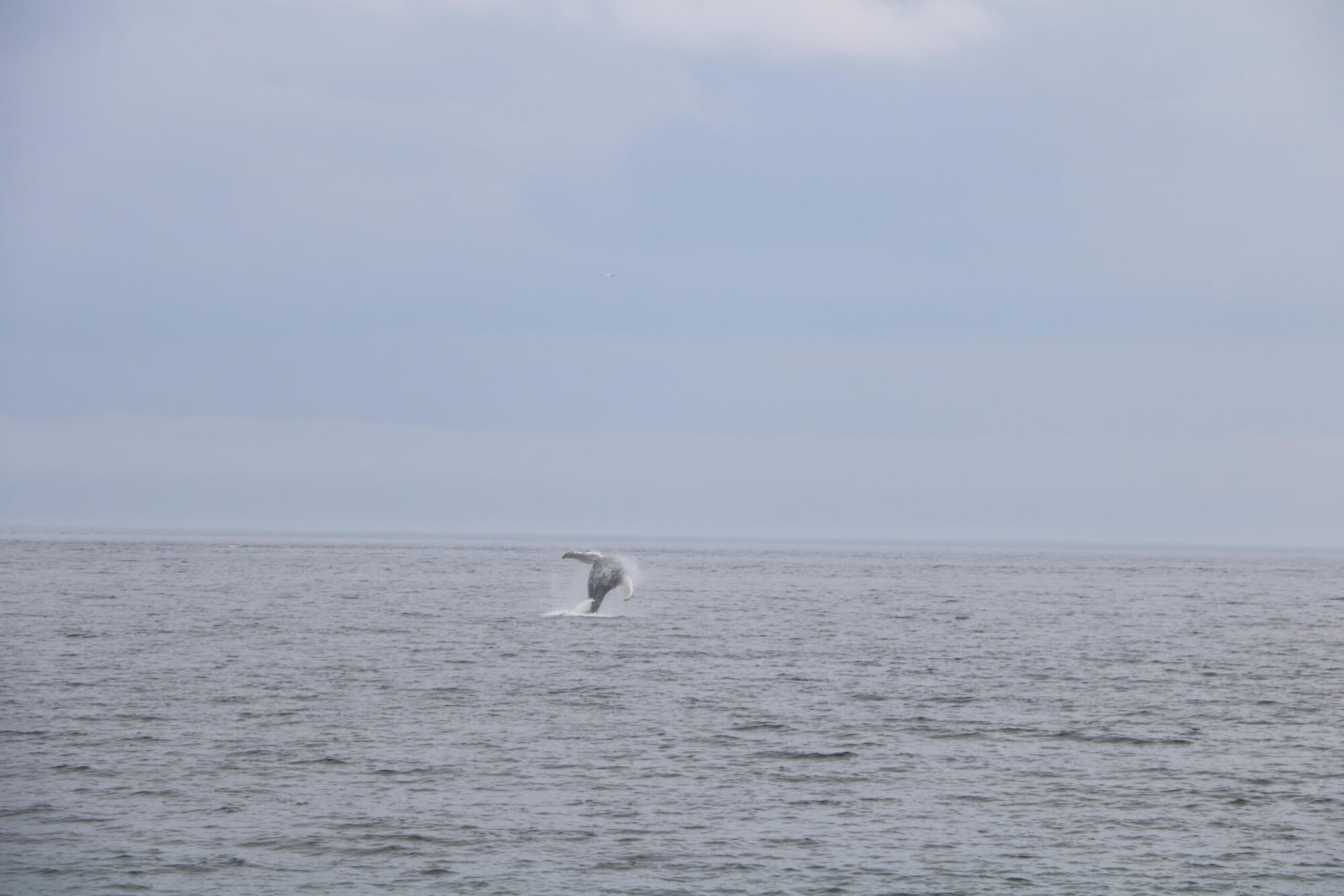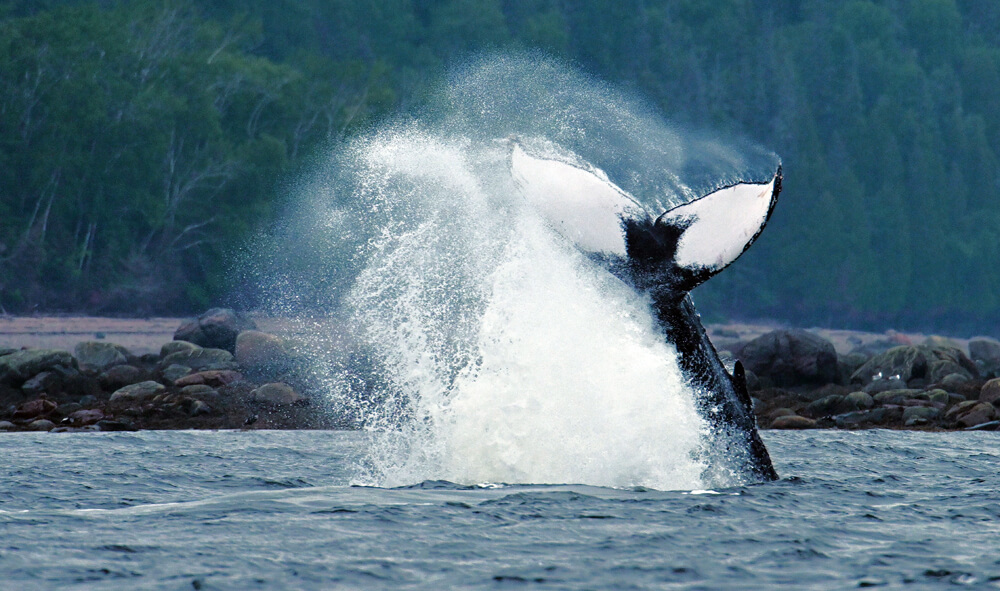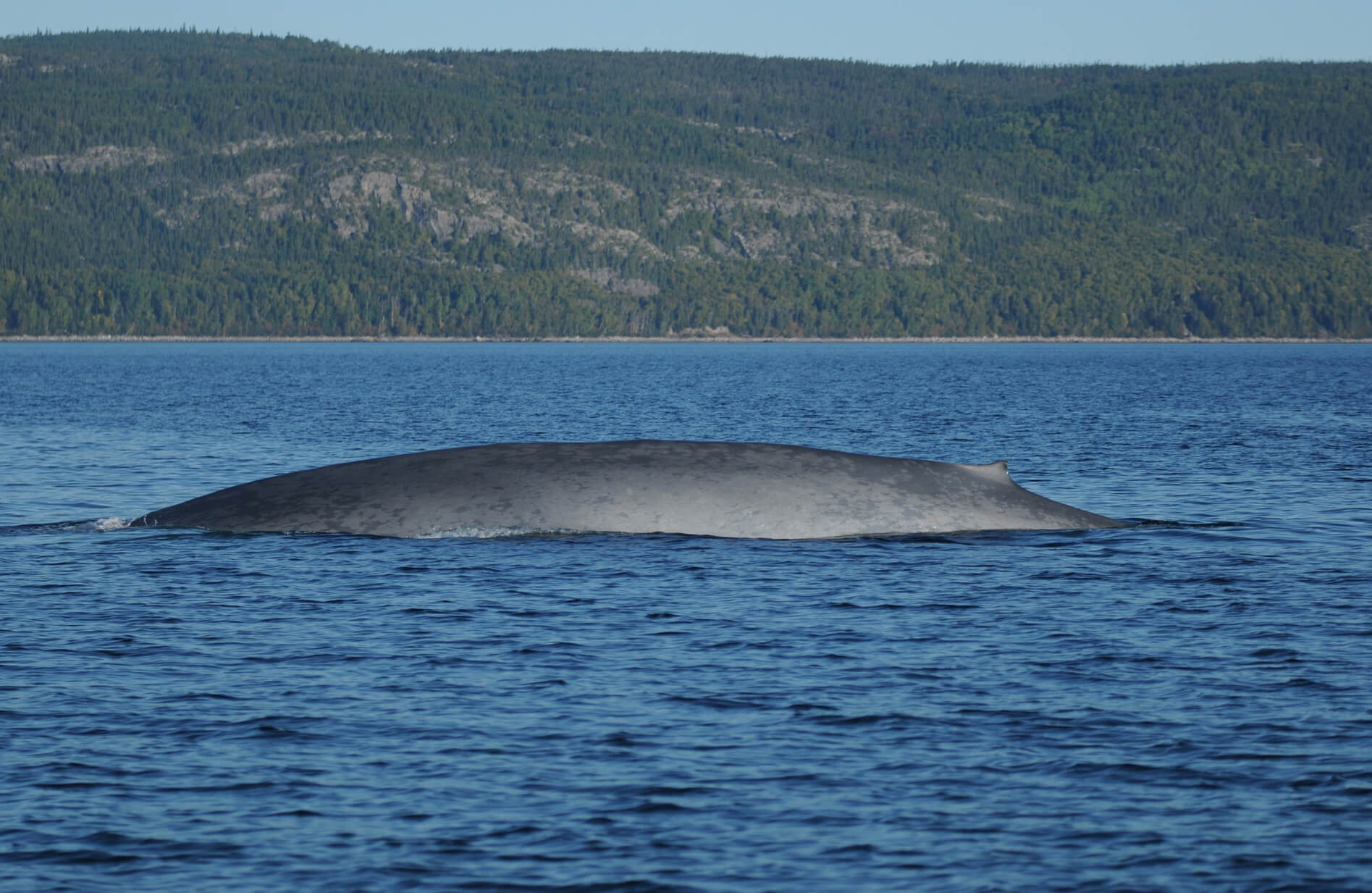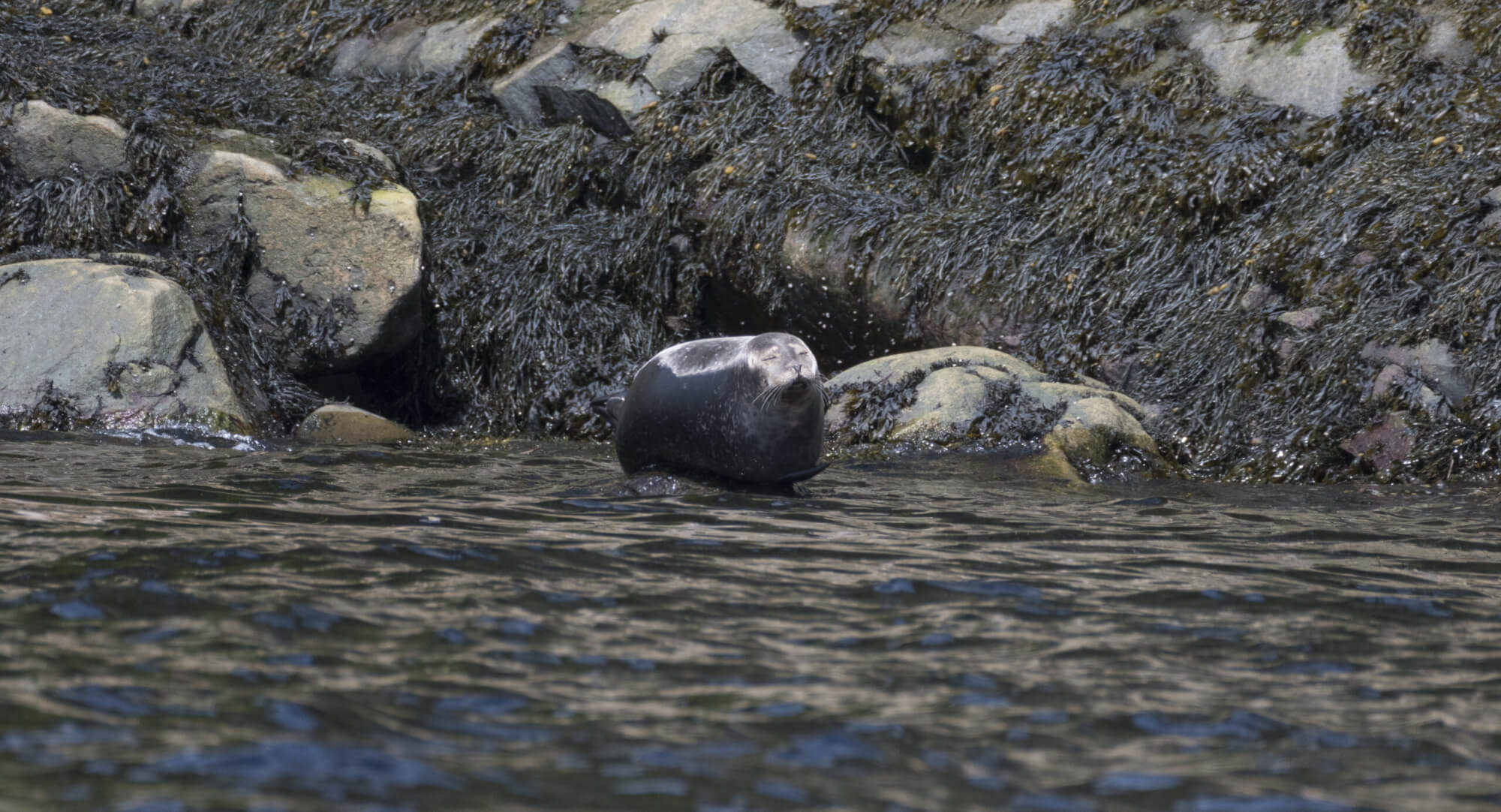They exude an aura of magic that animates evening get-togethers along the shores of the St. Lawrence. Every year, visitors arrive in droves to observe them. We try to understand them and make sense of their behaviour. We spin tales about them and our fascination with them seems to know no bounds. Undeniably, whales are real stars of the St. Lawrence!
Whether it’s the little harbour porpoises or the gargantuan blue whales, all cetaceans have their place on the podium of wonder. Through the sightings that have been reported over the past week, let’s look at how each species has the potential to captivate those who are lucky enough to see them.
Humpback whales: Dynamic and easy to identify
What’s most impressive about humpbacks is their splashy (no pun intended!) behaviour. Whether it’s their balloon-like spout, the possibility of seeing their towering black and white tail fin when they dive, or even more dynamic displays such as breaches or slapping of the pectoral or tail fins on the water, humpbacks have everything they need to wow their spectators. On a cruise through the Saguenay-St. Lawrence Marine Park, many passengers were able to admire the well-known Guadeloupe performing a full breach. Something they’ll never forget! The whale was also observed near Les Bergeronnes, this time accompanied by Aramis. Another well-known whale, H858 a.k.a. Queen, was spotted offshore. This individual, which has been frequenting the area since 2017, owes its nickname to the white crown on the top of its tail.
Other regions also enjoyed their fair share of humpback whale sightings! Between Ragueneau and Manitou, three or four different individuals were seen. By analyzing the photos provided by one observer, one of them might even be Tic Tac Toe, although it’s impossible to say for sure. Blasts have been blurring the horizon in the Franquelin sector, where the Mingan Island Cetacean Study (MICS) team was able to identify up to eight individuals during a single outing on the water. Three more humpbacks were seen near Sept-Îles. Fog in the Gaspésie region failed to put a damper on observations – far from it – with between four and ten individuals spotted in the sector.
Fin whales: Fast and mysterious
Fin whales, also known as the “greyhounds of the sea,” are always impressive to observe. Even if it is the second largest whale in the world, this graceful cetacean can move quite quickly! Those with a good ear will be sure to hear its noisy breathing and the keen eye will spot its long dark grey back gliding across the water surface. In the past week, these seasonal residents of the estuary have been seen in both the gulf and the estuary: four individuals near Sept-Îles, one in Port-Cartier, and two in the Mingan Archipelago. Two more individuals were also regularly observed roaming around the Saguenay-St. Lawrence Marine Park. Photos taken by a marine mammal enthusiast ultimately allowed the Group for Research and Education on Marine Mammals (GREMM) team to identify Bp918, also known as Kashkan, who was first observed in 2000. After an absence between 2001 and 2005, this individual has now been seen in the estuary almost annually since 2006!
Blue whales: Titans of the St. Lawrence
And what about the most gigantic of giants? How can one not be impressed by the power and elegance of the largest animals on the planet? Their 6-metre high spout can be heard several kilometres away. Their bluish grey or pale grey back topped with a small dorsal fin make them almost instantly recognizable! In the past week, individuals have appeared all around the gulf, including two in Gaspé Bay, three in Port-Cartier and one in Sept-Îles.
Minke whales: Big eaters easy to observe from shore
Often observed near shore, minke whales often show jaw-dropping feeding behaviour. The arrival of several minkes in the Tadoussac, Les Bergeronnes and Les Escoumins sector has delighted those who are constantly staring out at the horizon in search of dorsal fins. These skilled swimmers have also been present in Gaspé Bay, Franquelin and Sept-Îles. On the water, experienced boaters observed many of these animals during their foray to the Mingan Islands: “We saw harbour porpoises here and there south and north of the islands… a good dozen in total. There were also three minke whales around Île du Havre: a large one in the cove known as Anse des Noyés around 10:30 a.m., one at the northwest tip of the island around noon, and a very small one near the buoy off Cap à Corbeau around 3:45 p.m. Also, two or three harbour seals that we spotted one at a time.”
Harbour porpoises: Spirited and fast
The smallest cetaceans of the St. Lawrence are often spotted in speedily moving groups that barely make a splash, creating the impression that they are rolling across the water surface. The presence of this species was reported in Havre-Saint-Pierre, Sept-Îles and in the Saguenay-St. Lawrence Marine Park.
Belugas: Highly social animals
Wherever they go, belugas bring smiles to people’s faces. Glimmering in the sun and contrasting with the dark waters of the river, their white backs give the species a je ne sais quoi of mystery and magic. Whether off the coast of Île-aux-Lièvres, at the mouth of the St. Lawrence, or in Baie Sainte-Marguerite, the effect is always the same. A lookout at the Parc national du Fjord-du-Saguenay allows visitors to observe this cetacean in its natural environment. The bay is closed to watercraft in summer, offering them the peace and quiet the animals need for socializing. Wednesday, July 12: Over thirty individuals were seen on this sunny day!
Let’s not forget the seals!
As for the pinnipeds, a harbour seal was quietly lying on a rock when its observer was able to catch its eye from the Pointe-aux-Pics marina in La Malbaie. A late harp seal was observed near Tadoussac, while a gathering of about thirty grey seals was seen from Les Bergeronnes.
It all goes to show that, no matter where you are in the St. Lawrence, the stars are never far away!
Where are the whales this week? Observations map
These infomations were reported by our network of observers. They give an idea of the presence of whales and in no way represent the actual distribution of whales in the St. Lawrence river. Simply use it for fun!
Click on the whale or seal icons to discover the species, the number of individuals, additional information or photos of the sighting. To enlarge the map, click on the icon in the top right-hand corner. The map works well on Chrome and Firefox, but not so well on Safari.
To display the list of sightings, click on the icon in the top left-hand corner.












